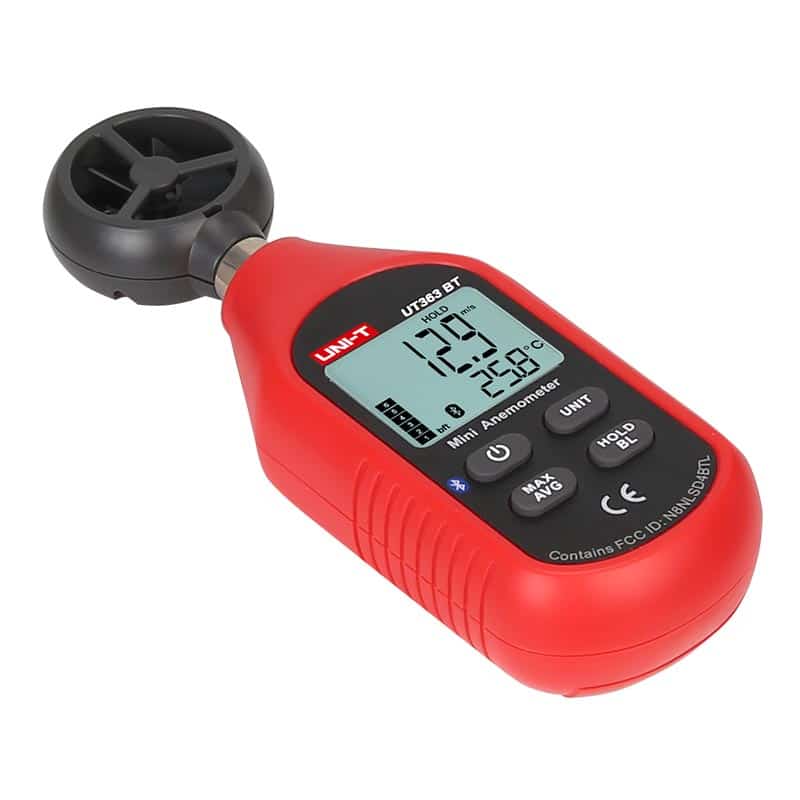Recognizing Different Types of Anemometers for Numerous Applications
Recognizing Different Types of Anemometers for Numerous Applications
Blog Article
Discovering the Features and Advantages of Anemometers for Climate Enthusiasts and Professionals
From cup anemometers to sonic anemometers, each kind brings its one-of-a-kind collection of advantages and applications, dropping light on various facets of climatic conditions. As we dive into the functions and advantages of anemometers, a deeper understanding arises not only of prevailing climate phenomena but additionally of the wider implications for markets like wind energy manufacturing and environmental study.
Value of Anemometers in Weather Surveillance
Anemometers play a crucial function in weather surveillance by offering accurate dimensions of wind speed, assisting in forecasting and understanding climate patterns. These instruments, varying from standard mug anemometers to contemporary ultrasonic anemometers, are essential for meteorologists, scientists, and weather lovers alike. By measuring wind rate, anemometers help in establishing the intensity of weather condition phenomena such as hurricanes, typhoons, and tornados. Additionally, they supply valuable data for aeronautics, maritime operations, and different industries that are sensitive to wind problems.

Sorts Of Anemometers and Their Applications
The most usual kinds of anemometers include cup anemometers, vane anemometers, hot-wire anemometers, and ultrasonic anemometers. Mug anemometers consist of three or 4 mugs placed on straight arms that revolve with the wind, gauging its rate. Vane anemometers, on the various other hand, make use of an easily rotating vane to align with the wind direction, giving both wind speed and instructions dimensions.
Cup anemometers are durable and suitable for basic weather condition monitoring, while vane anemometers are favored for directional dimensions. Ultrasonic anemometers are non-intrusive and supply high accuracy, frequently used in study and specialized weather condition monitoring applications.
Benefits of Making Use Of Anemometers in Projecting
In weather forecasting, the use of anemometers uses indispensable advantages for enhancing the accuracy of climate forecasting. Anemometers measure wind rate and instructions, supplying crucial data for anticipating weather patterns. By integrating wind information right into projecting models, meteorologists can better recognize the movement of weather systems, prepare for adjustments in weather, and issue extra precise forecasts.
Moreover, anemometers play an essential function in assessing possible climate risks. Monitoring wind rates aids forecasters anticipate serious weather events such as typhoons, twisters, and winter season storms with greater precision. This very early caution system enables authorities to issue prompt signals and carry out needed safety and security steps, lowering the risks to life and property.
Furthermore, anemometers aid in maximizing renewable resource production. By evaluating wind patterns, meteorologists can recognize suitable areas for wind ranches and forecast power output, adding to the reliable generation of wind power.

Anemometers in Wind Power Manufacturing
Given the essential function anemometers play in giving accurate wind information for climate forecasting and hazard assessment, their importance reaches the world of wind power production. Anemometers are important instruments in the area of wind energy, where the measurement of wind speed and direction is essential for identifying the expediency and performance of wind turbine installments. By precisely measuring wind rates click now at differing elevations, anemometers aid optimize the positioning and design of wind click to investigate turbines to maximize power output.
In wind ranches, anemometers are strategically put to accumulate real-time wind data that is utilized to examine the prospective energy manufacturing of a site. This data contributes in determining the economic viability of wind energy jobs and in forecasting energy generation to guarantee grid stability. Furthermore, anemometers aid in keeping an eye on wind problems to optimize turbine performance, prevent damages from high winds, and make certain the security of workers operating in the area of wind turbines.
Enhancing Weather Recognizing With Anemometers

Anemometers play an essential role in boosting our understanding of microclimates. These localized climate conditions can vary dramatically from broader his explanation local forecasts, making it necessary to have precise data for details areas. anemometer. By tactically positioning anemometers in different areas, researchers can gather detailed information on how wind behaves in different surfaces, city settings, or bodies of water
Moreover, anemometers add to enhancing weather condition projecting models by supplying real-time information on wind actions. This details is especially beneficial for predicting extreme weather events, maximizing agricultural methods, and sustaining sectors like aeronautics and maritime navigation. On the whole, anemometers are indispensable instruments that enable us to dive much deeper right into the intricacies of climate systems, ultimately causing even more better-informed choices and accurate forecasts.
Final Thought
In verdict, anemometers play a vital duty in weather tracking and forecasting by measuring wind rate and direction. Anemometers likewise have applications in wind energy production, additional highlighting their value in both meteorology and eco-friendly energy fields.
From mug anemometers to sonic anemometers, each kind brings its unique set of advantages and applications, shedding light on different elements of climatic conditions. These instruments, ranging from standard mug anemometers to modern-day ultrasonic anemometers, are necessary for meteorologists, researchers, and weather enthusiasts alike. The most typical types of anemometers consist of mug anemometers, vane anemometers, hot-wire anemometers, and ultrasonic anemometers. Mug anemometers are robust and ideal for basic weather tracking, while vane anemometers are favored for directional dimensions. Anemometers are vital instruments in the field of wind energy, where the measurement of wind speed and instructions is essential for establishing the expediency and effectiveness of wind generator installments.
Report this page